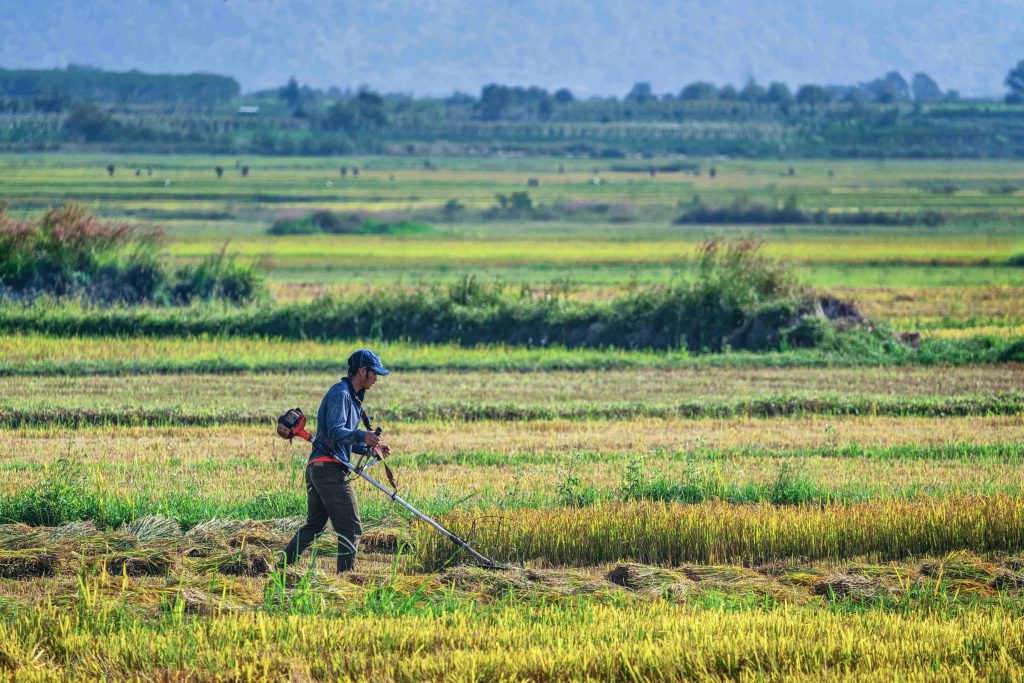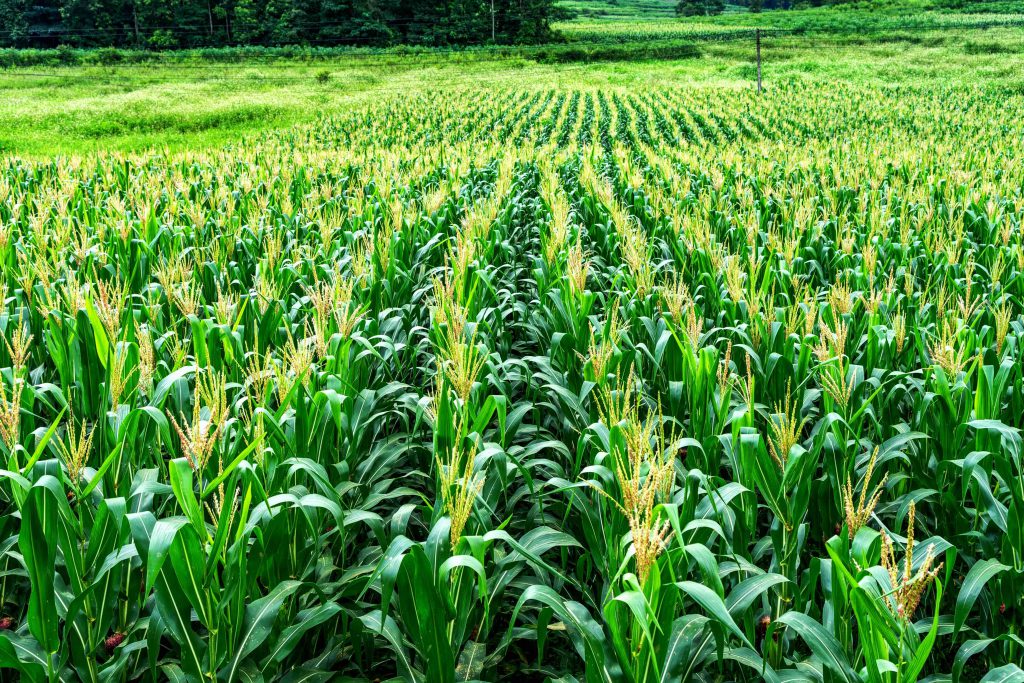Story: Anh Thu
Photos: Quang Ngoc
Amid strong growth in agriculture and agricultural exports in recent years, Heritage spoke with Mr. Tran Cong Thang, Director General – Institute of Strategy and Policy on Agriculture and Environment (ISPAE), Ministry of Agriculture and Environment, about green agriculture and the pursuit of Net-Zero goals in the sector.
Sir, traditionally, when people mention greenhouse gas (GHG) emissions, they typically think of industry or transportation and rarely consider agriculture. What are the main sources of emissions from the agriculture sector, and what proportion do they account for in Vietnam’s total GHG emissions?
Energy, including both its production and use, is the sector with the highest GHG emissions, accounting for more than 70% of the total. In Vietnam, according to the national GHG inventory, the main sources of emissions are energy, agriculture, industry, and waste. However, the share of emissions from agriculture in the national total has decreased in recent years. The national GHG inventory reports for 2010, 2013, and 2016 show that agricultural emissions were 88.3 million tons of CO2 equivalent (CO2e), or 33.2%; 89.41 million tons of CO2e, or 30.49%; and 83.56 million tons of CO2e, or 23.46%, respectively.
In agriculture, the four main sources of emissions include: (i) Enteric fermentation (CH4 emissions from the digestion process of ruminant animals); (ii) Manure management (CH4, N2O emissions from livestock waste); (iii) Rice cultivation (CH4 emissions); and (iv) Burning of agricultural residues (CH4 and N2O emissions). Among them, emissions from rice cultivation account for the highest proportion. In 2010, emissions from rice cultivation were 44.6 million tons of CO2e (accounting for 18.08% of the national total GHG emissions), and in 2016, emissions from rice cultivation were 49.69 million tons of CO2e (accounting for 15.69% of the national total GHG emissions). Thus, although the amount of GHG emissions from rice cultivation increased, the proportion decreased during the 2010-2016 period.

What measures is the agriculture sector currently implementing to reduce GHG emissions?
Although the agriculture sector’s share of GHG emissions has been decreasing relative to other sectors, the National Strategy on Climate Change up to 2050 aims for the country’s total GHG emissions to reach net-zero by 2050. For this, the agriculture sector needs to reduce GHG emissions by 63.1%, with emissions not exceeding 56 million tons of CO2e. The forestry and land use sector must reduce emissions by 90% and increase carbon absorption by 30%, with total emissions and absorption reaching at least -185 million tons of CO2e.
To achieve these goals, the agricultural sector has developed and implemented the Action Plan to Reduce Methane Emissions by 2030, as well as the Plan to Mitigate GHG Emissions in the Agriculture and Rural Development Sector. Many measures to reduce emissions in agriculture have been implemented and continue to be applied in a coordinated manner, tailored to each ecological region and the specific conditions of each locality.
For crop production, measures include expanding the use of alternate wetting and drying (AWD) technology and the System of Rice Intensification (SRI); applying “3 reductions, 3 increases” (3G3T) and “1 must, 5 reductions” (1P5G) methods; conducting mid-season drainage in irrigated rice; converting inefficient rice land; upgrading small-scale and on-farm irrigation systems; expanding integrated crop management and modern cultivation techniques; improving fertilizer application; and collecting, managing, and reusing crop residues. As for livestock, the sector will focus on improving feed rations for ruminant animals (dairy cows, beef cattle, buffaloes, goats) while improving technology to reuse livestock waste as organic fertilizer.
Who should be involved in mitigating GHG emissions in agriculture, and what types of resources are needed to achieve this?
The goal of achieving net-zero emissions by 2050 was announced by the Prime Minister at COP26 in 2021 in the UK and officially included in the National Strategy on Climate Change through 2050 in July 2022. As a national-level political commitment, its implementation is the responsibility of all levels, sectors, and the public. The State leads and creates the framework, while people and businesses are central actors in carrying out measures, supported by socio-political organizations. Additionally, international initiatives, alliances, and financial organizations provide crucial technical and financial support to help achieve the net-zero target by 2050.
Achieving the net-zero emissions goal requires substantial resources. In addition to human resource development, science and technology, technology transfer, and infrastructure construction, financial resources are critical for implementing GHG mitigation measures. According to the 2022 technical report on updating Vietnam’s Nationally Determined Contribution (NDC), the estimated financial needs to implement the NDC by 2030 are approximately USD21 billion for the unconditional scenario and USD86 billion for the conditional scenario. Specifically for the agriculture sector, implementing mitigation measures using domestic resources would require USD2 billion, rising to USD16 billion under the conditional scenario.

Given the high resource requirements, why is it still necessary to implement GHG emission reduction measures and develop low-emission agriculture models? What benefits does this process bring?
The green transformation and development of low-carbon agriculture not only provide environmental benefits by reducing GHG emissions but also offer clear economic value for the country and farmers. Implementing GHG reduction measures in agriculture, particularly in crop production and livestock, helps lower input costs, limit land and water degradation, improve the quality of agricultural products, and meet green and sustainable production standards.
In addition, the green transformation opens up greater opportunities to access international markets, where environmental standards and product quality requirements are increasingly strict. Green agriculture enhances the value and competitiveness of Vietnam’s agricultural products, creates jobs, protects ecosystems, and contributes to the country’s sustainable development.
Could you provide specific examples of the benefits observed in the 1 million hectares of high-quality, low-emission rice project in the Mekong Delta?
The project was approved by the Prime Minister on November 27, 2023, under Decision No. 1490/QD-TTg, aiming to establish 1 million hectares of specialized high-quality, low-emission rice areas linked to green growth in the Mekong Delta by 2030. After more than a year of pilot implementation across three consecutive rice production seasons in 12 provinces, preliminary results as of July 2025 show a total registered area of 312,000 hectares, exceeding the planned target by 112,000 hectares.
The project currently involves 620 cooperatives and around 200 enterprises providing inputs and handling output. Of the 232,000 hectares already implemented, approximately 68% are linked to input supply and output consumption. The Ministry of Agriculture and Environment continues to apply 11 models across different ecological regions to evaluate sustainable cultivation processes and measure emission reductions. Additionally, localities have implemented 101 pilot models covering a total area of over 4,518 hectares.
Results show that productivity has increased by 5-10%, with economic efficiency rising by VND3-5 million per hectare compared to traditional cultivation methods in the same areas. For example, in Dong Thap province, rice yield reached 7.1 tons per hectare, a 4% increase, while profits rose by VND4.6-4.8 million per hectare. Emission reductions in this model were measured at approximately 3.13 tons of CO2e per hectare per crop, and additional income from selling straw reached VND400,000 per hectare.
Pilot models in Can Tho City show rice yields 0.3-0.7 tons per hectare higher than areas using traditional methods. Total production costs in these models decrease by an average of VND1.1 million per hectare. Profits exceed those of traditional cultivation by VND1.3-6.5 million per hectare, achieved by reducing seed use by 50%, nitrogen fertilizer by 30%, pesticide applications 2-3 times, and irrigation water by 30-40%. Notably, GHG emission measurements by the International Rice Research Institute (IRRI) indicate that these models reduce emissions by 2-12 tons of CO2e per hectare per year.
The project has positively impacted rice exports. At the beginning of 2025, Vietnam exported 500 tons of rice labeled “Vietnamese Green Low-Emission Rice” to Japan, opening new prospects for Vietnam’s rice industry.
Thank you, sir!










